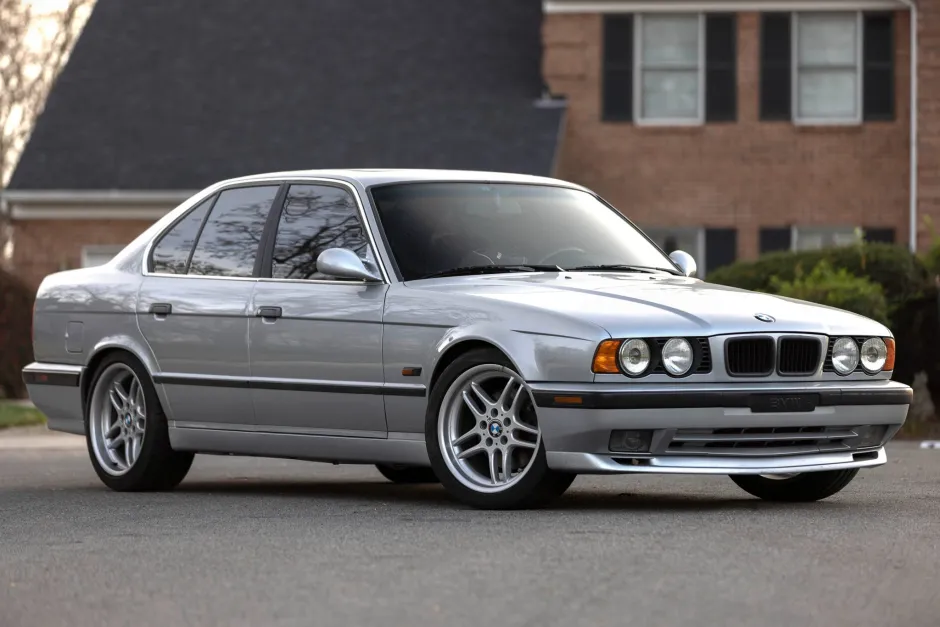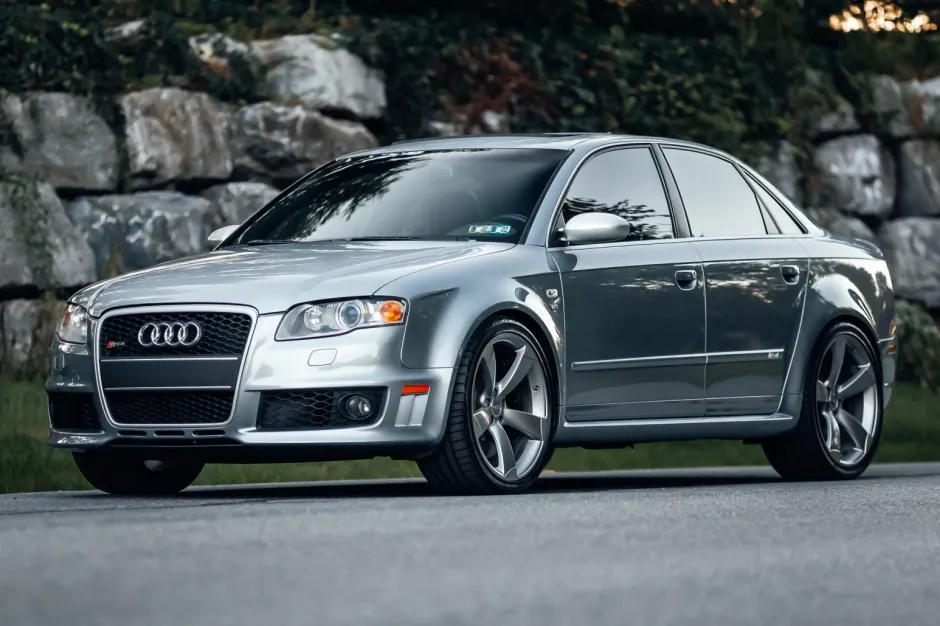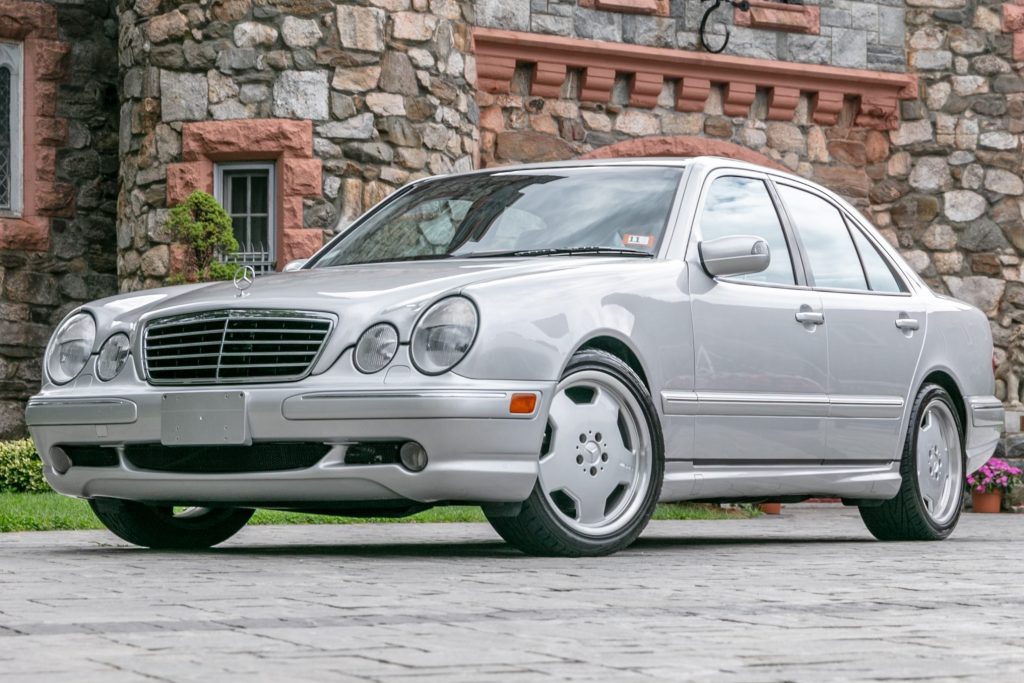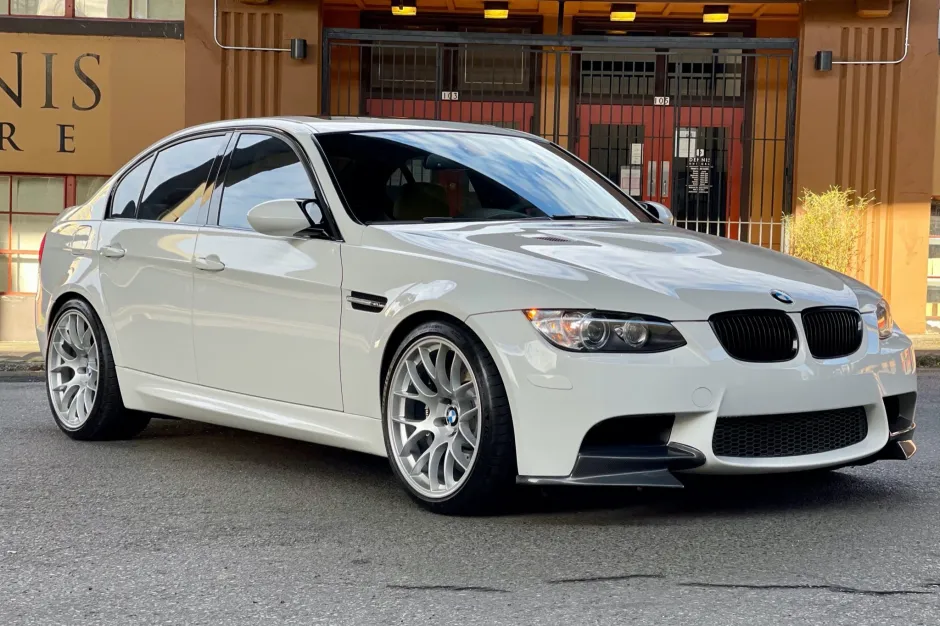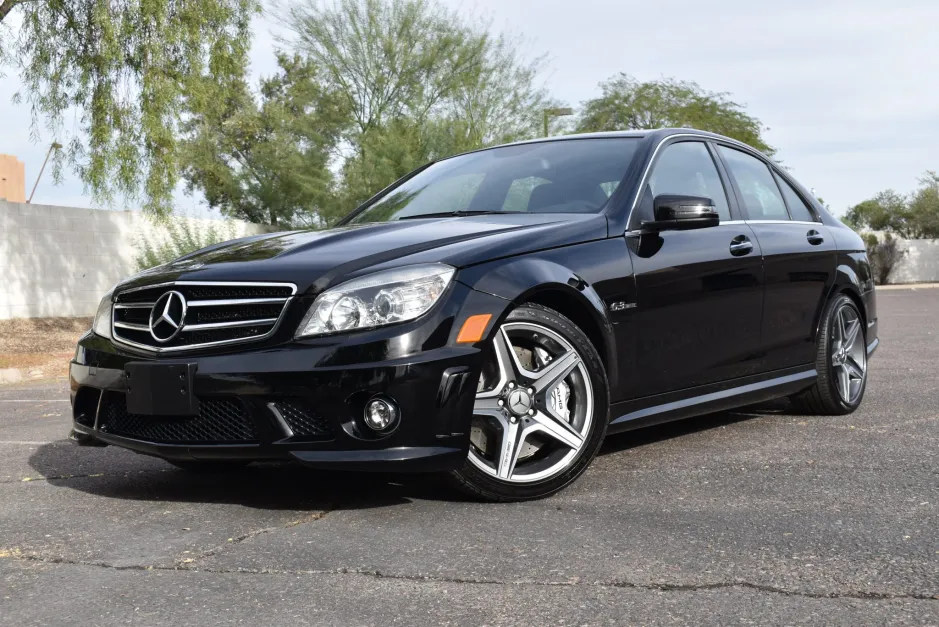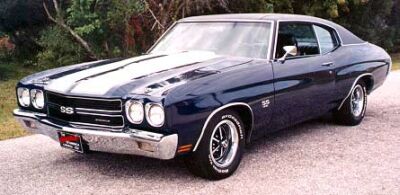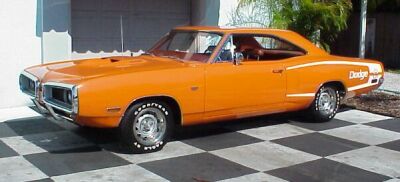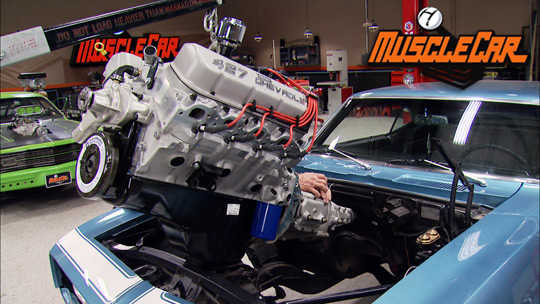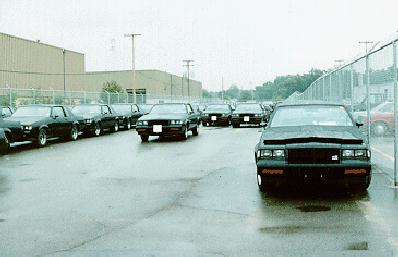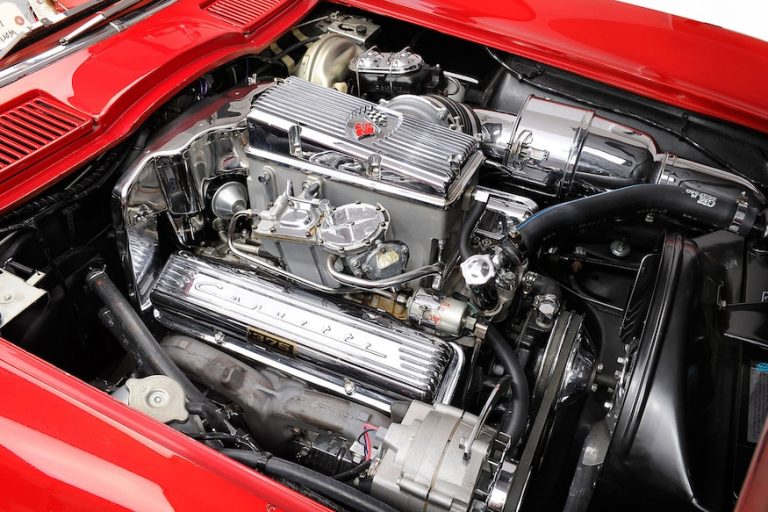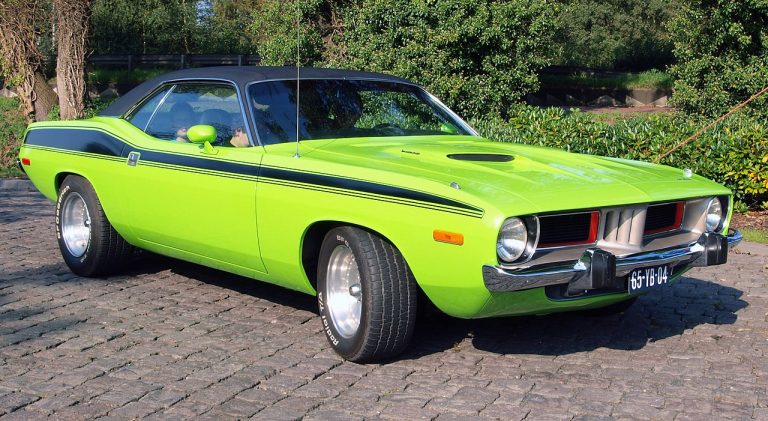Ultimate German Muscle Cars – Does Germany Do It Better?

Meet Austin
Austin has been a muscle car enthusiast since an early age with his Dad having a collection including a 1965 Mustang, 1968 Mercury Cougar, and a 1969 Mustang Mach 1 among many others. Austin received a technical writing degree from University of Colorado Denver with the intentions of becoming an automotive journalist. His automotive knowledge, enthusiasm, and hands on experience allow him to craft detailed, accurate, and high-quality articles for the passionate Muscle Car Club audience.
If you are a purist, you are likely squirming in your seat after reading the title of this article. German muscle cars, really? After all, the muscle car category is just as closely tied to American identity as the bald eagle or biscuits and gravy. But, just because the US was the hotbed for the muscle revolution of the 1960s doesn’t mean that other countries haven’t tried their hand at the small form factor, bare-bones, big-horsepower formula. In fact, a few other nations have truly given us a run for their money, with Germany being a prime example.
“Rowdy” isn’t likely the first adjective that you’d use to describe some of Germany’s most prolific car manufacturers. Clinical, precise, and meticulous are probably more fitting descriptors of the ethos of most German companies, if not Germany as a whole. However, like a nun on sabbatical, the hair needs to be let down every so often. And, let me tell you, Germany’s big three (Mercedes, BMW, and Audi) have their fair share of misfit models.
So, How Do We Define “German Muscle Cars?”
The term “muscle car” is subject to interpretation. As such, I’d argue that its definition has more to do with attitude than anything else. Of course, there are some staples – i.e. a hefty V8 engine, small form factor, etc. – but the overall muscle class is loved and appreciated regardless of geography.
If we look at some of the most famous muscle car origin stories, it is clear that many German muscle cars are cut from the same cloth. Let’s look at what is widely considered to be the first muscle car, the Pontiac GTO. In 1963, John DeLorean devised a nefarious plan to completely ignore GM’s ban on purpose-built racecars for the road. He took a midsize pedestrian model, the 1964 Pontiac Le Mans, and shoved an engine fit for a land yacht under the hood. That started a revolution.
Looking closely at Germany’s offerings, many of their best cars follow that exact same vein. Take the BMW M-Division for example. Every M car since the 1979 M535i is a civilian model with a nuke under the hood. AMG can be looked at in exactly the same way. Of course, there is much more that goes into these upper-echelon German machines besides just the powertrain. However, the premise remains the same. That is true whether you are looking at a 1966 Ford Galaxie 500 or a 2000 E55 AMG. While German muscle cars might be thought of as more capable off the strip, their soul is the same.
Let’s take a look at some of the most celebrated German muscle cars that could square up with America’s best.
BMW E34 540i
BMW is certainly one of the most prominent manufacturers when it comes to German muscle. Their long history of placing V8 engines into cars where they don’t belong truly fits with the muscle mantra. While most enthusiasts would claim that the E39 M5 was BMW’s first true attempt at creating a V8 hotrod, I’d argue that they built a car that better encompassed the true spirit of muscle debauchery 10 years earlier.
The BMW E34 5-Series is an often overlooked model in BMW’s extensive catalog. A lot of that likely has to do with the fact that Mercedes dominated the luxury-yet-visceral sedan space with the W124 during the early 1990s, overshadowing the rather tranquilized E34. However, while still under the radar, the V8-powered E34 540i had a heart capable of trashing tires with a vengeance.
The 540i was added to the E34 5-Series lineup in 1992. That was late in the game considering that the E34 was replaced with the E39 generation 5-Series in 1995. The E34 540i featured an all-new for the time M60B40 4.4L V8, which was one of the most advanced and potent V8 powerplants in the world in the early ’90s. The 540i produced a US-shaming 286 horsepower and 325 lb-ft of torque. For perspective, that is 70 more horsepower than the top trim 1994 Mustang GT.
Outside of the engine, though, the E34 is pure wallpaper paste. But, that’s exactly what makes it a fantastic muscle car. From its truly lifeless steering to its bouncy suspension, the E34 540i is saved entirely by its engine, and it truly is a great engine. While the E39 M5 is a better car, the E34 540i is a better muscle car.
Audi B7 RS4
Like BMW, Audi also has a storied history of V8 behemoths. While Audi didn’t develop their first V8 engine until it was featured in the Audi V8 (Typ 4C) in 1988, it was a hit right out of the gate, powering a Group C version of the Typ 4C to back-to-back Deutsche Tourenwagen Meisterschaft (DTM) titles in 1990 and 1991. I guess Audi felt pretty good about that. They have continued using potent V8s in their upper-tier production cars to this day.
There were a few fantastic V8-powered Audis that came between the 1988 Typ 4C and the Audi B7 RS4 released in 2006, but the latter truly became an icon of German muscle offerings. Ultimately, the B7 RS4 is more of a muscle car in spirit than in actuality. Equipped with Audi’s signature Quattro all-wheel-drive system, lightweight magnesium/aluminum alloy multi-link suspension, ‘automatic torque biasing’ center differential, and Dynamic Ride Control, the B7 RS4 is certainly capable around corners. With that being said, the RS4 is still undoubtedly even more comfortable on the drag strip.
Powering the B7 RS4 is a 4.2L V8 engine capable of 414 horsepower and 317 lb-ft of torque. Being a modern V8, the monstrous powerplant is capable of revving to 8,250rpm, yeah, you read that right. The amount of power on tap produces some pretty ludicrous performance figures right from the factory. 0-60mph in 4.3 seconds and a quarter mile in 12.8 impressive.
Despite the RS4’s trick drivetrain and suspension technology, its underpinnings are muscle through and through. As with most of the cars on this list, the B7 RS4’s 4.2L V8 overshadows every other aspect.
Mercedes E55 AMG
In many ways, Mercedes can be called the godfather of German muscle cars. While BMW and Audi have their offerings, Mercedes truly forced them to step up to bat. Mercedes’ muscle origins actually span all the way back to the mid-1980s. A small independent company called AMG (ever heard of it?) took a civilian 300E, removed everything civilian about it, and shoved a heavily modified Mercedes 4.4L V8 under the hood. Sounds a bit like the Pontiac GTO story if you ask me.
For a decade after that, AMG kept fiddling with stock Mercedes machinery, turning luxury cruisers into true monsters. They were so good at it that Mercedes brought them into the fold in 1993, releasing the C36 AMG jointly. However, it was truly the E55 AMG, released in 1998, that demonstrated that Mercedes knew how to put the big boys to shame.
In their 2000 review of the E55 AMG, MotorTrend put the German stallion head to head with the C5 Corvette, saying “If that pip-squeak in the new Corvette next to you doesn’t launch perfectly-and nail every one of his redline shifts with lightning speed-you’re going to whup him good in the sprint to 60 mph, you and your Mercedes-Benz E55-and over the distance of the quarter mile, too.” That pretty well sums up the E55’s capabilities.
With 349 horsepower and 391 lb-ft of torque on offer, the E55 AMG was a true supercar killer. It had one over the Porsche 911, Jaguar XJR, and even the Ferrari Testarossa. As a sedan. If that doesn’t embody the muscle spirit, I don’t know what does.
BMW E9X M3
Prior to 2008, it would have been a serious stretch to call the BMW M3 a muscle car. To that point, BMW’s flagship sports sedan was characterized by high-strung inline-6 engines and a heavy emphasis on driving dynamics and handling. The latter part of that statement stuck around for the E9X generation of M3. However, BMW made a change that had enthusiasts reeling. That was the switch to a hefty V8 engine, bringing horsepower to 414 and torque to 295 lb-ft.
While the BMW M-Division was no stranger to V8 engines, with a primary example being the S62 V8 found in the E39 M5, it was the first, and last, time that the M3 would be driven by 8 cylinders. In the minds of many BMW enthusiasts, that was blasphemy. However, as time has passed, it has become one of the most celebrated M cars in history because of the 4.0L S65 under the hood.
The V8 changed the character of the E9X M3 entirely. Where power was placed on the back burner in the previous E36 and E46 generation M3s, it was very much the focal point with the E9X M3. Despite a very linear power curve, the E9X was best driven high in the rev range. With an 8,400rpm redline, it’s much more fun to spend time up there anyway. The sound is bullish too, reminding you to take it seriously during every pull.
Overall, its brutish widebody styling, blistering quarter mile time, and savory V8 heart made the E9X M3 one of the most memorable German muscle cars of all time. The fact that it will likely be the only V8 M3 adds a bit of magic as well.
Mercedes C63 AMG
In Top Gear’s 2008 review of the Mercedes C63 AMG, atop frantic footage of the juiced C-Class turning rubber to smoke, Jeremy Clarkson said, “You don’t really drive this car, you cling on for dear life.” That should tell you everything that you need to know about the C63’s road manners. For a German sports saloon, the C63 AMG behaves more like a prodded bull experiencing an allergy attack. That is exactly why it is on this list.
Despite there being a ton of viable contenders, the C63 AMG, specifically the W204 generation, has always stood out in my mind as THE German muscle car. In comparison to some of the others, the C63 is relatively stripped-back. There is a focus on rawness that is missing from the highly tuned and dialed M3 or Audi B7. The W204 C63 AMG is horizontal and spewing tire smoke in nearly every press shot and review that you come across. That really gives the Merc such a sense of Americana.
The source of the C63’s antics can be found under the hood in the form of a 6.2L Mercedes M156 engine. The M156 was also found in many of Mercedes’ larger offerings like the E63 and S63 AMGs of the time. The large engine, small car formula truly is the essence of muscle car ideology. As such it is yet another box that the C63 checks. As far as German muscle cars go, the C63 AMG might just be the most pure.


